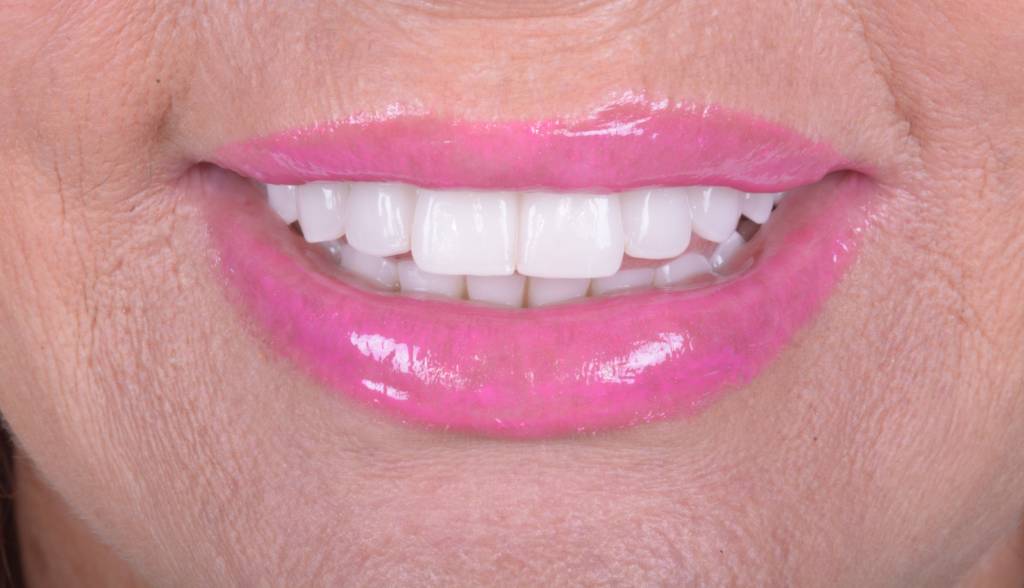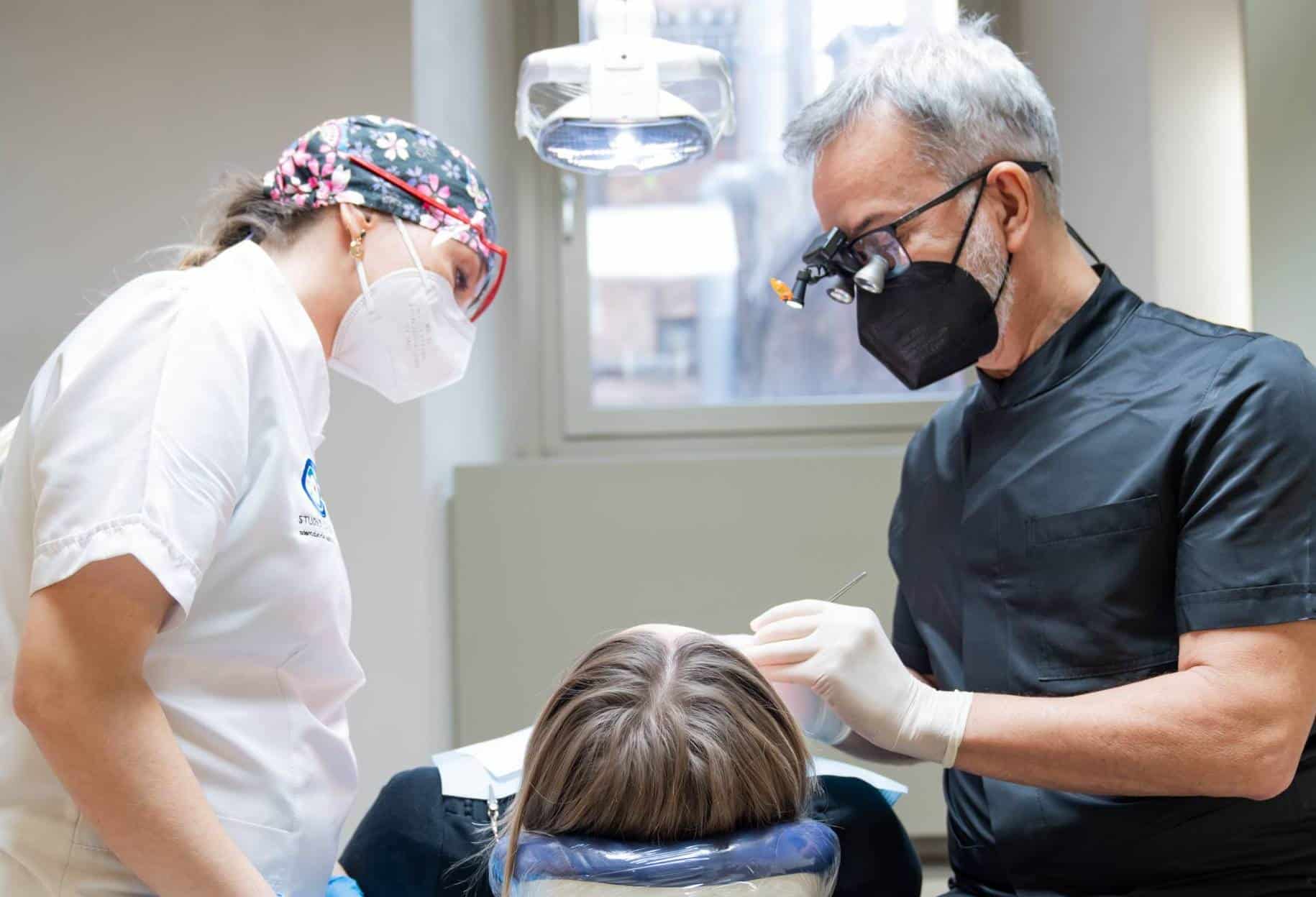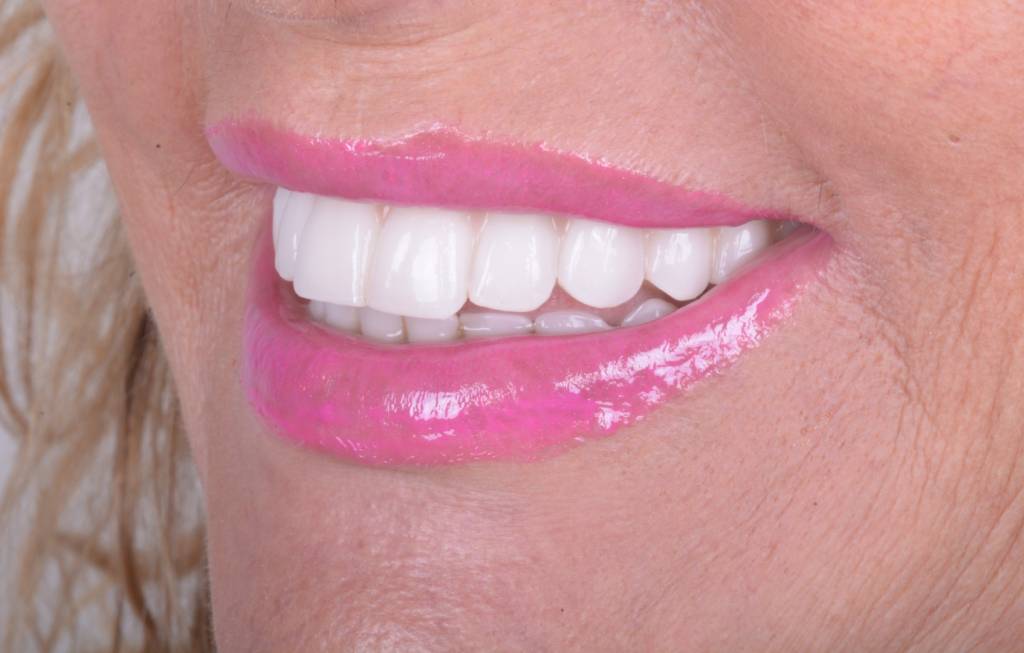Pre-prosthetic surgery, when necessary?
Tooth loss is the leading cause of atrophy of the jawbone and gum tissues. Bone atrophy will be more marked in cases of traumatic loss, congenital agenesis, in cases of severe periodontal disease, or following the removal of neoformations. Often, these conditions create the need to improve the local anatomical situation before proceeding with prosthetic procedures to favor a better resolution of the clinical case.
A) Pre-prosthetic surgery (removable denture)

Pre-prosthetic surgery, in removable prosthesis, uses surgical therapies that modify the anatomy of the bone crest or gum of the edentulous or semi-edentulous mouth to allow the insertion and better stability of removable dentures (dentures).
Osteotomy
Some non-pathological bone protuberances lined with gingiva, called “exostosis” (protruding bone growths), located on the bony ridges, on the palate (large palatine torus), or in the inner part of the jaw must be surgically removed to promote prosthetic stability.
Osteotomy is a small-medium invasive intervention required only for prosthetic purposes because bone exostoses, although not pathological, represent an anatomical disorder for the stability of the removable prosthesis.
Increased fornix
Fornix augmentation is a surgical intervention that promotes the stability of the removable prosthesis.
It is limited to the gingival mucosa and is indicated in the case of edentulous ridges with little retentive.
The intervention involves deepening the fornix, the “fold” of the mucosa between the lip and the teeth through the incision, the detachment and the displacement of the gum in a deeper area, and, finally, the suture of the same.
This procedure aims to promote the increase of the bone crest and the adherence of the prosthesis to determine more excellent retention and stability.
The removable prosthesis is applied on the same day of surgery and rebased with a soft paste to promote healing and maintenance of the new position of the gum.
The healing occurs in about ten days. Post-operative symptoms may involve mild burning and gingival edema well compensated by mouthwashes and appropriate medications.
B) Pre-prosthetic surgery (fixed prosthesis anchored to natural teeth)
These four surgical procedures aim to improve the outcome of fixed prosthetic therapies anchored to natural teeth.
1) Elongation of the clinical crown.
The elongation of the clinical crown, that is, the visible part of the tooth that emerges from the gum, is carried out in cases of pathological or physiological (hereditary) gingival hypertrophy that determines a gingival smile (i.e., greater exposure of gingiva than teeth) and therefore an altered relationship between gingiva and tooth or if the tooth is fractured or decayed up to below the gingival level. Discovering a part of it is necessary to obtain a good anchorage for the crown Prosthetic.
This intervention is carried out:
Removing excess gums (gingivectomy);
detaching and moving the gum toward the apex of the tooth (apical repositioning flap);
They remove excess bone and detachment by repositioning the gum towards the apex of the tooth (osteotomy and apical reposition flap).
These are short-term interventions; the post-operative symptoms are controllable through analgesic and anti-inflammatory drugs.

2) Removal of frenulum (frenulectomies)
Labial frenules are muscular insertions associated with folds in the gingival mucosa that connect the lip's inner part to the gum. The labial frenulum is the most involved in pre-prosthetic surgery because, when they assume a dense consistency concomitant with a deficit in length, they "pull" the gum towards the apex of the tooth and expose part of the root. This favors the establishment of gingival and periodontal inflammatory processes and imperfections that hinder, functionally and aesthetically, the fixed prosthesis on natural teeth or implants;
The lingual frenules are the mucous folds between the tongue's lower part and the mouth's floor (sublingual area). Their thickening and reduced length lead to phonetic, chewing, and swallowing problems.
The surgical therapy indicated in these cases is called frenulectomy. It consists of the frenulum’s surgical movement through the scalpel or, better, the laser under local anesthesia. Using the scalpel involves sutures for the closure of the wound, which will then give a mild post-operative symptomatology controllable with drug therapy. The healing phase and the final resolution will occur within 10-15 days. The symptomatology is almost absent using the diode laser; no sutures are necessary, and healing occurs in about seven days. Frenulectomy is often required as a pre-orthodontic therapy because the presence of frenules can sometimes cause dental displacements and the formation of diastemas, i.e., spaces between the teeth, unsightly and predisposing to periodontal disease.
3) Gingival grafts
Gingival grafts are indicated in cases of gingival deficiency around the teeth to be prosthetic. A sufficient band of keratinized gum (the hard, pink, and resistant gum coated with keratin) around the tooth’s root to be prosthetic is a significant factor for the periodontal health of the tooth and prosthetic success. On the other hand, its absence causes the tooth to be partially surrounded by non-keratinized mucogingival tissue, such as that of the cheeks and the floor of the mouth. This anatomical situation predisposes to numerous periodontal diseases and future imperfections of the prosthetic tooth because the mucous tissue is not very resistant and elastic, facilitating the entry of plaque between the gum and the root and the development of gingival recessions and periodontal problems. The operation involves placing a small band of gums, resistant and rich in keratin, taken from the palate and grafted around the teeth to be prosthetic. The results of mucogingival surgery heal in 15-20 days, generally without any post-operative symptoms.
4) Surgical filling techniques
Sometimes, even in an abundant band of keratinized gingiva, it is possible to find a depression in some areas affected by the prosthesis. These depressions are determined by bone resorption secondary to tooth extractions. Surgical techniques to compensate for these deficits involve filling and correcting defects using:
Gingival grafts are taken from the palate;
Gingival leaflets are partially incised and folded in the exact locations of the defects.
These techniques aim to create the correct gingival morphology and promote the aesthetic and anatomical harmony of the area to be prosthetic.


C) Pre-implant surgery
Implantology is a technique that allows the replacement of missing dental elements with one or more titanium implants.
In some cases, however, the anatomy of the jaw bones is not suitable for receiving implants; in such cases, it is necessary to resort to pre-implant surgery techniques.
Pre-implant surgery prepares the bone, maxillary, and mandibular bases for the proper placement of the implants.
In the case of transverse or vertical atrophies, skeletal recovery is often possible through bone grafts taken from the patient himself or using various types of bio-compatible materials.
Such procedures are possible when favorable bone thicknesses and morphologies are evaluated with CBCT (Cone beam computed tomography).
When the bone thickness is not adequate, it is possible to resort to implants with zygomatic anchorage and computer-guided implantology, a programming technology with innovative software that, starting from the acquisition of the CBCT of the maxillary arches, allows the three-dimensional virtual visualization of the bone and the programming of the positioning of the implants in an ideal way concerning the present bone and the future prosthesis pre-visualizing the final result from the point of view functional, morphological and aesthetic.
D) Pre-prosthetic surgery (fixed prosthesis anchored to implants)
These surgical techniques allow the application of fixed prostheses anchored to implants, favoring their aesthetic and functional integration even in situations where the quality or bone quantity of the receiving site is not initially adequate.
The most used surgical techniques are:
osteoplasty;
gingivoplasty;
increased bone volume with grafting;
It increased bone volume with expansion.
Osteoplasty – Gingivoplasty
The term “osteoplasty” defines the remodeling of the bone ridges carried out using rotating instruments, ultrasound, or laser to give the bone crest a morphology more favorable to the positioning of the implants and to develop an excellent aesthetic integration of the prosthesis. Osteoplasty is often associated with “gingivoplasty, ” which involves remodeling the gum covering the bone crest.
It increases bone volume with grafting or expansion.
When the horizontal bone deficits are such that the implants cannot be placed, bone regeneration procedures must be used. Regenerative surgical procedures are numerous. They differ significantly in the number of interventions required to obtain the final result; operating times vary depending on the procedure chosen from a minimum of three to four months to two years and the economic and biological costs inherent in the therapies. Currently, for the compensation of horizontal bone deficits, the MTM approach, developed by the team of Dr. Calesini, is the one that guarantees the patient the best functional and aesthetic results associated with the lowest economic, temporal, and biological costs.